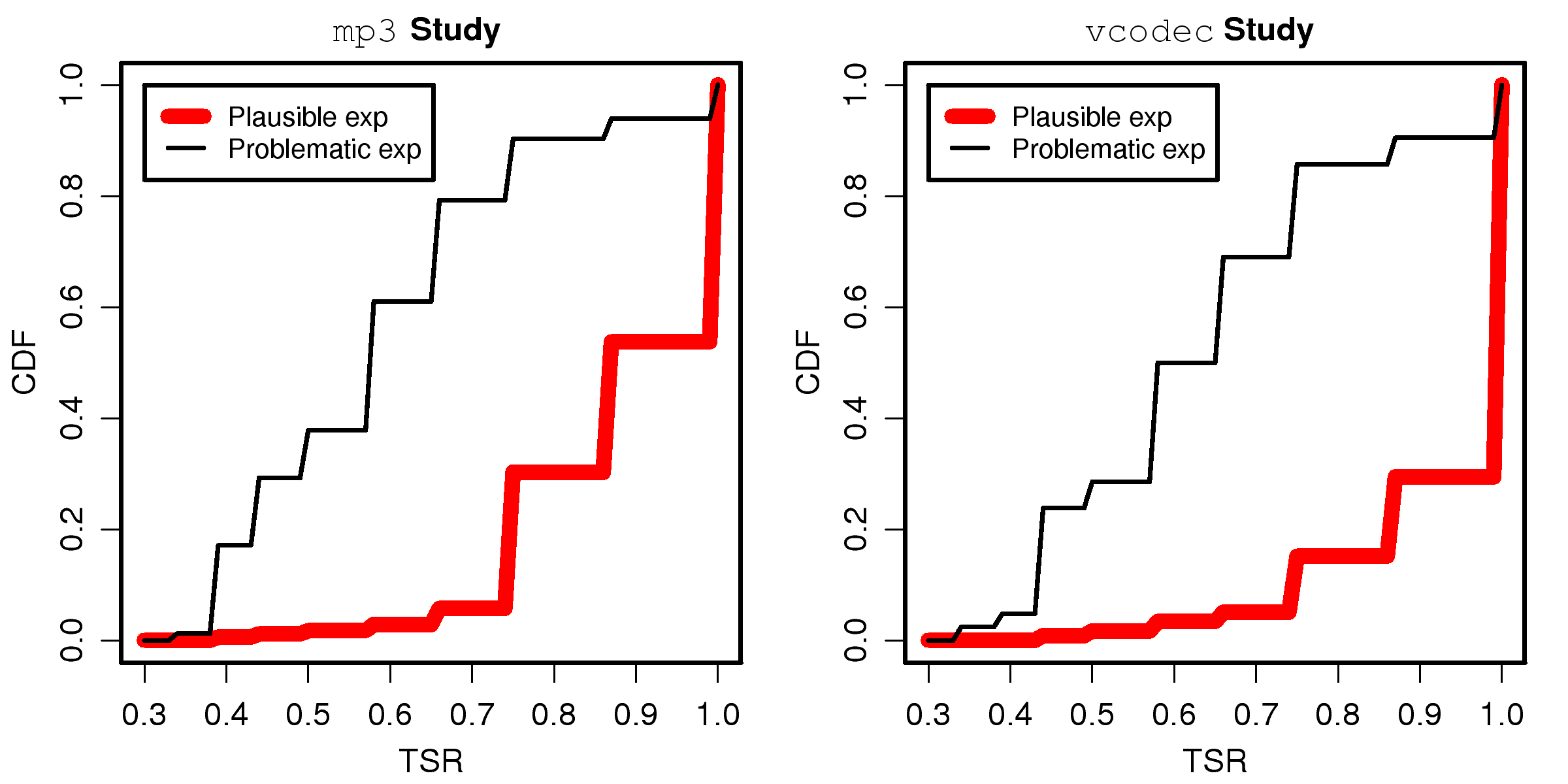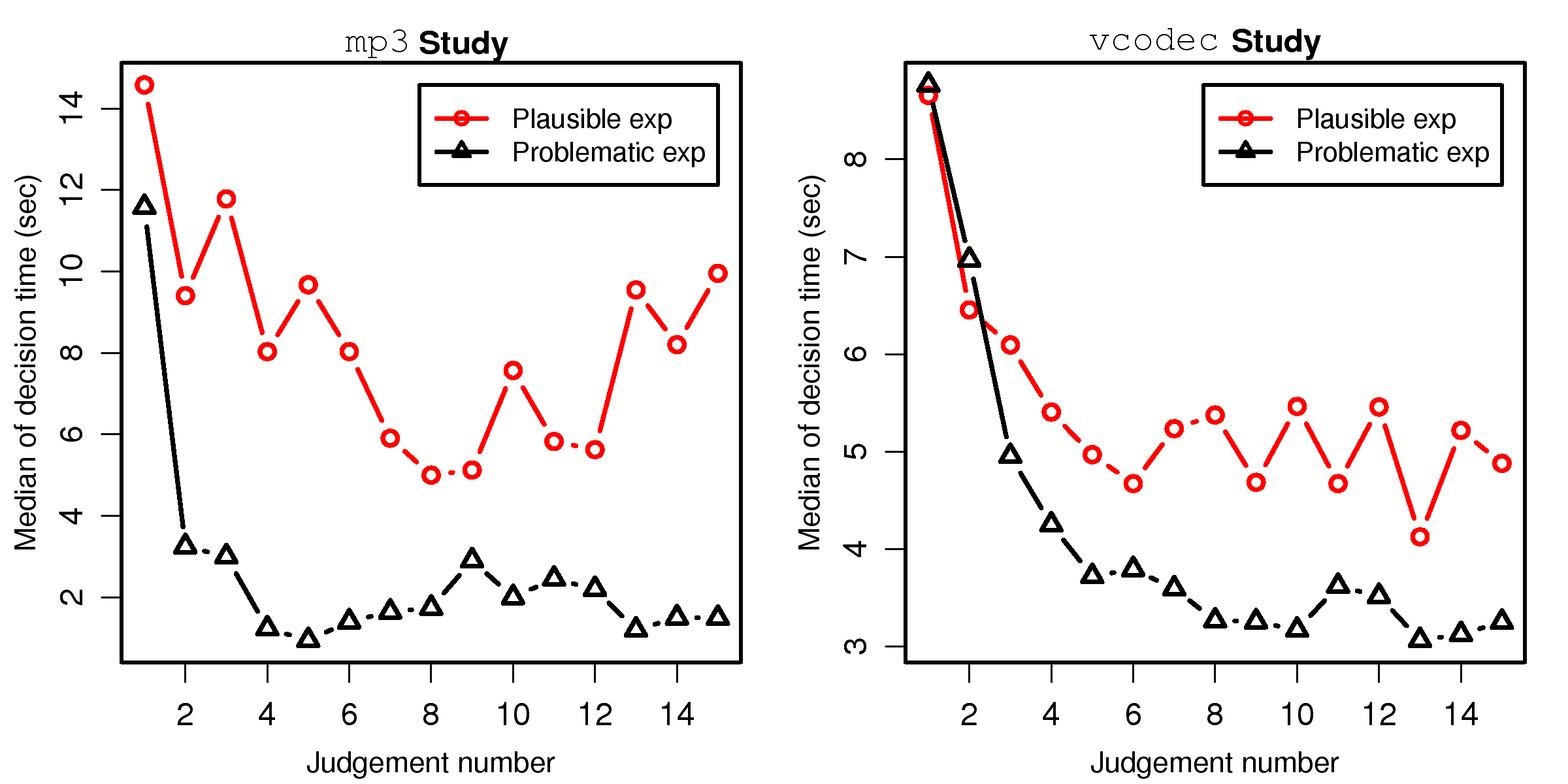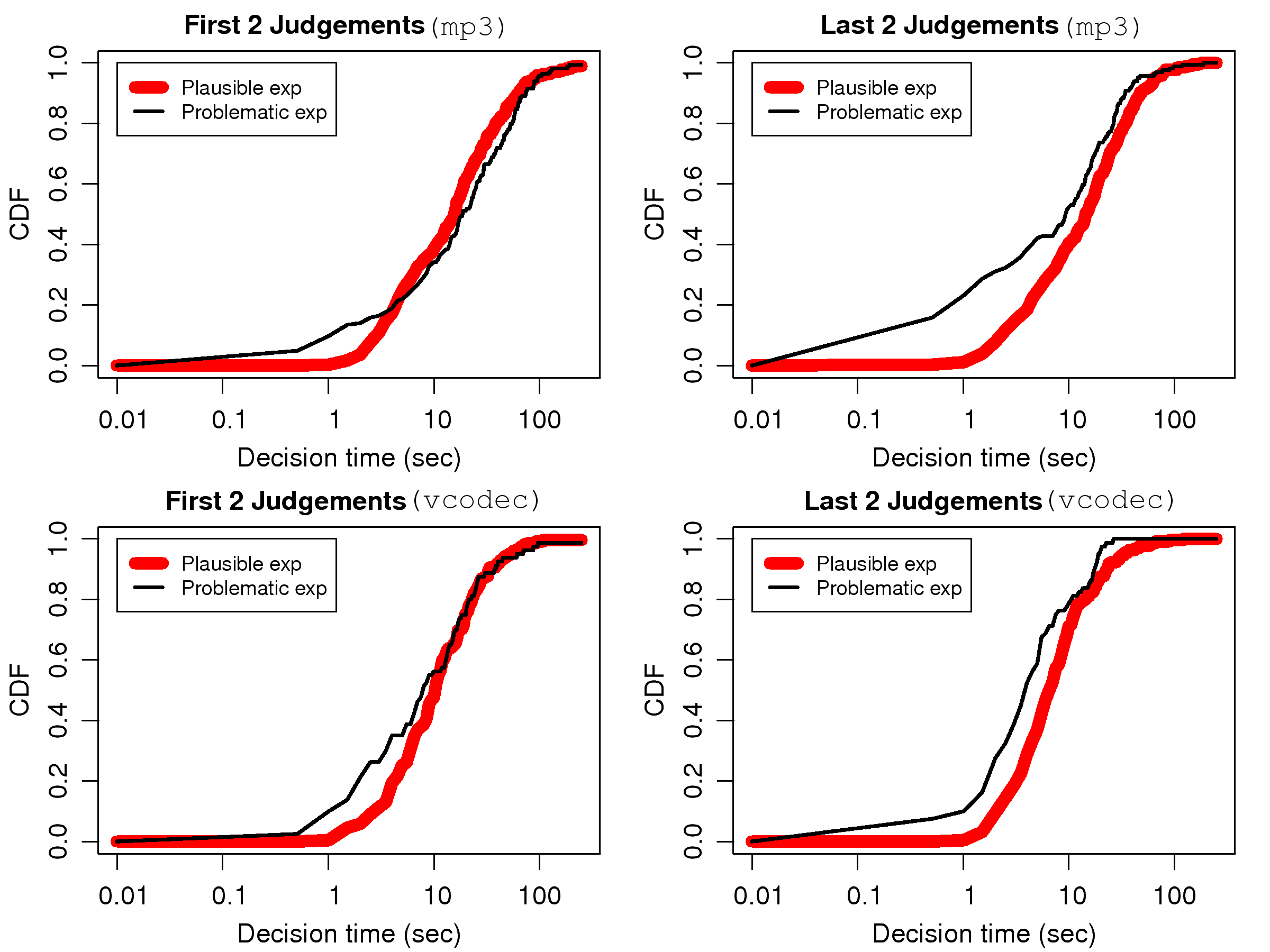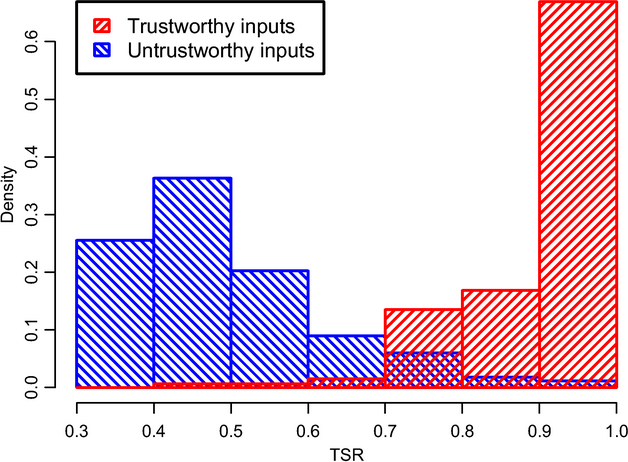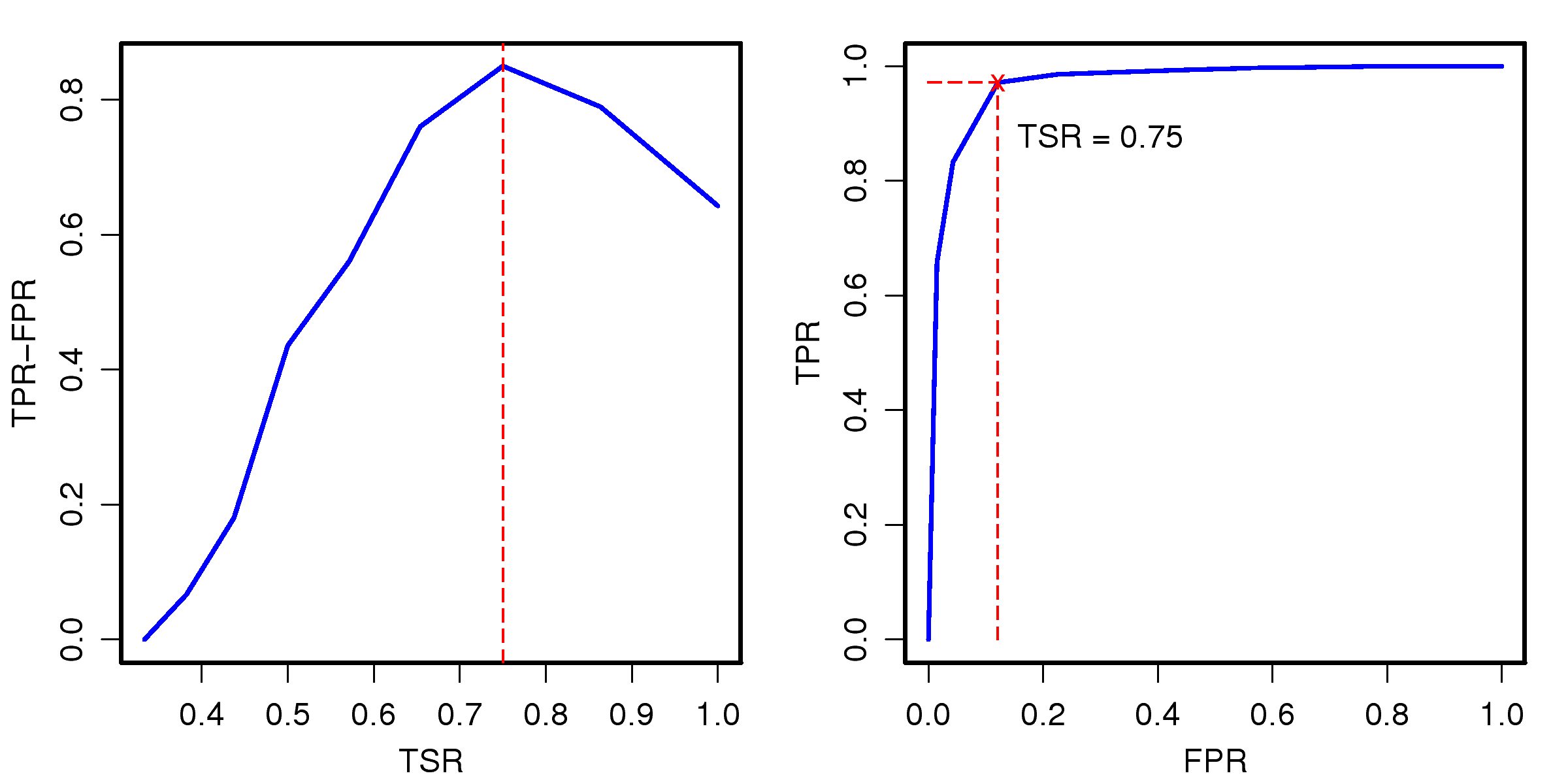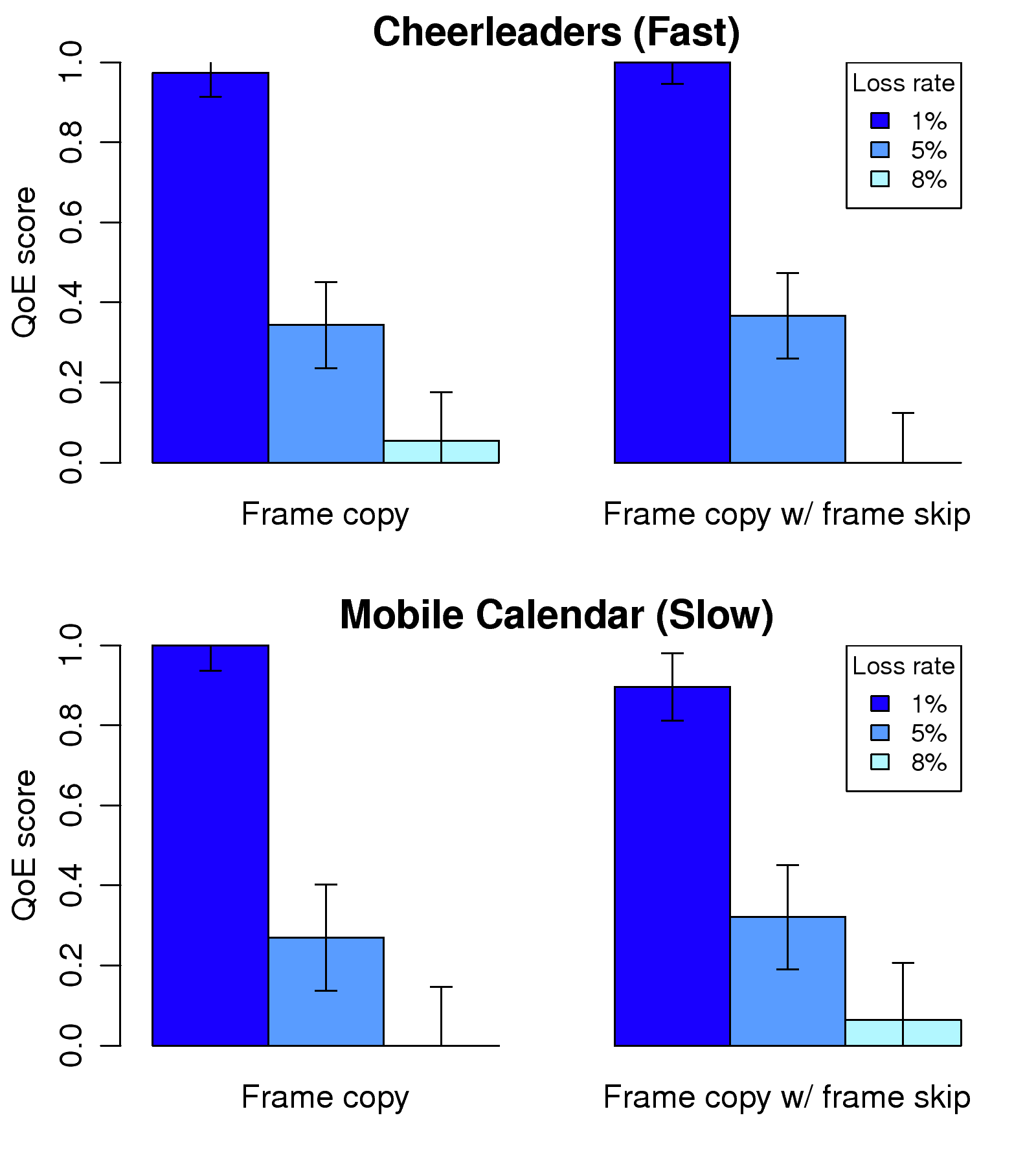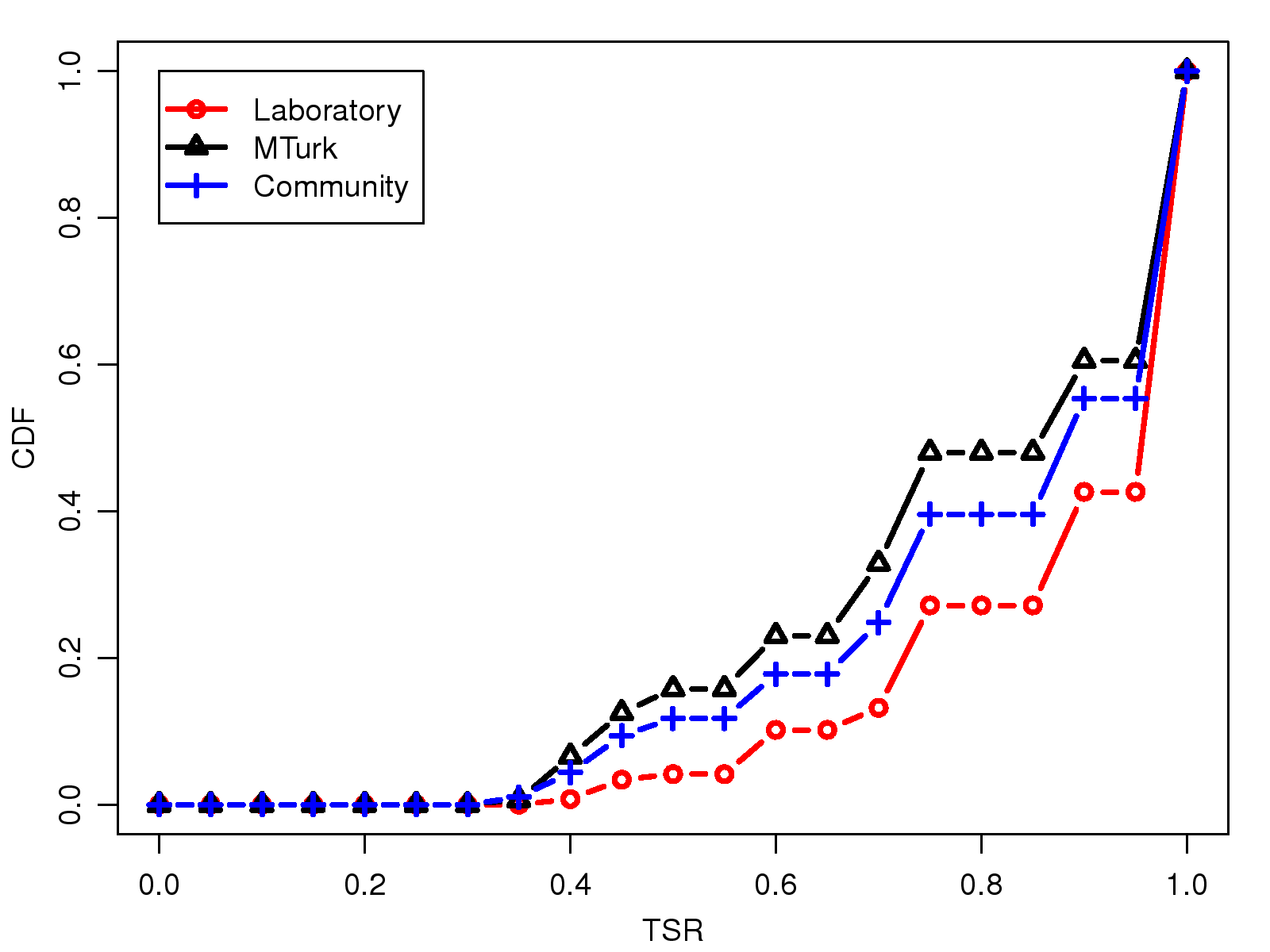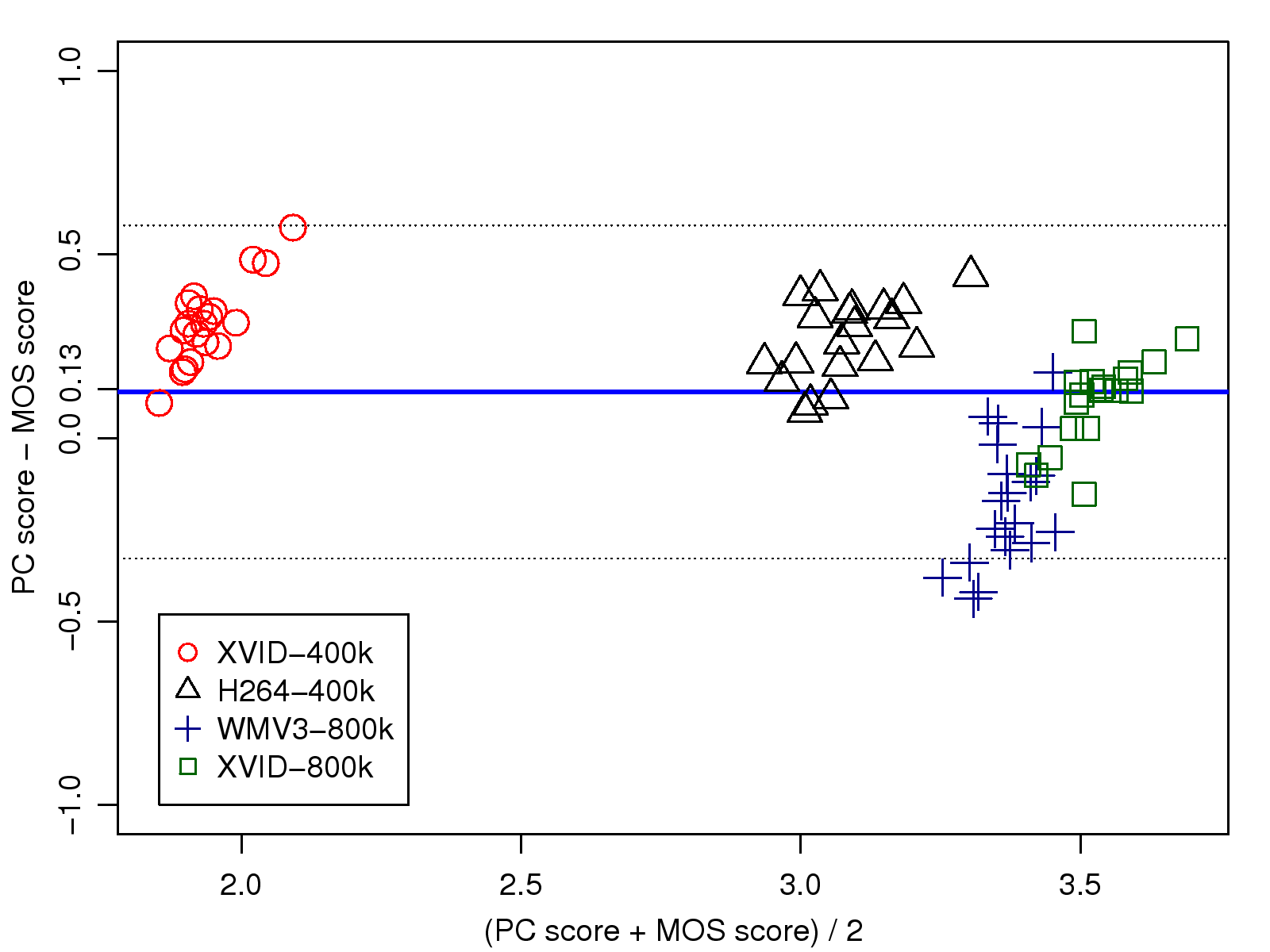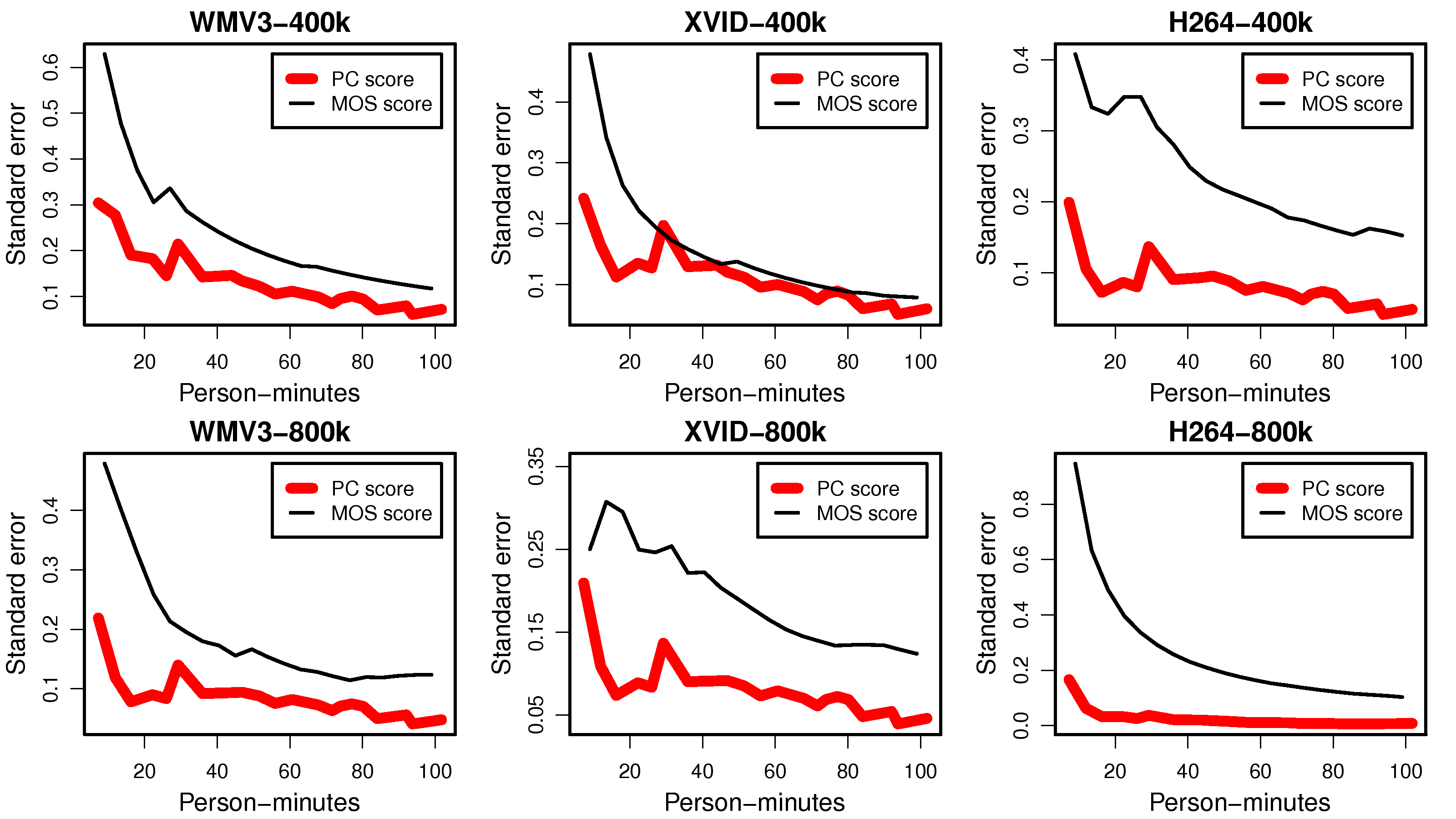This work was supported in part by the National Science Council under the grants NSC101-2221-E-001-012-MY3 and NSC101-2221-E-002-190-MY3.
[1]
O. Alonso, D. E. Rose, and B. Stewart, "Crowdsourcing for relevance
evaluation,"
ACM SIGIR Forum, vol. 42, no. 2, pp. 9-15, 2008.
[2]
A. Basso and S. Sicco, "Preventing massive automated access to web
resources,"
Computers and Security, vol. 28, no. 3, pp. 174-188,
2009.
[3]
M. H. Birnbaum,
Psychological Experiments on the Internet. Academic Press, 2000.
[4]
J. M. Bland and D. G. Altman, "Statistical methods for assessing agreement
between two methods of clinical measurement,"
The Lancet, vol. 327,
no. 8476, pp. 307-310, 1986.
[5]
D. C. Brabham, "Crowdsourcing as a model for problem solving: An introduction
and cases,"
Convergence: The International Journal of Research into
New Media Technologies, vol. 14, no. 1, pp. 75-90, 2008.
[6]
R. A. Bradley and M. E. Terry, "Rank analysis of incomplete block designs: I.
The method of paired comparisons,"
Biometrika, vol. 39, no. 3/4,
pp. 324-345, 1952.
[7]
S. Buchholz and J. Latorre, "Crowdsourcing preference tests, and how to detect
cheating," in
Proceedings of Interspeech 2011, August 2011, pp.
3053-3056.
[8]
B. Carnero and A. Drygajlo, "Perceptual speech coding and enhancement using
frame-synchronized fast wavelet packet transform algorithms,"
IEEE
Transactions on Signal Processing, vol. 47, no. 6, pp. 1622-1635, 1999.
[9]
Y.-C. Chang, K.-T. Chen, C.-C. Wu, C.-J. Ho, and C.-L. Lei, "
Online Game QoE Evaluation using Paired Comparisons," in
Proceedings of IEEE CQR
2010, June 2010, pp. 1-6.
[10]
K.-T. Chen, C.-Y. Huang, P. Huang, and C.-L. Lei, "
Quantifying Skype User Satisfaction," in
Proceedings of ACM SIGCOMM 2006, Pisa, Italy, Sep
2006.
[11]
K.-T. Chen, J.-W. Jiang, P. Huang, H.-H. Chu, C.-L. Lei, and W.-C. Chen,
"
Identifying MMORPG Bots: A Traffic Analysis Approach,"
EURASIP
Journal on Advances in Signal Processing, vol. 2009, 2009.
[12]
K.-T. Chen, C. C. Tu, and W.-C. Xiao, "
OneClick: A Framework for Measuring Network Quality of Experience," in
Proceedings of IEEE INFOCOM 2009,
April 2009.
[13]
K.-T. Chen, C.-C. Wu, Y.-C. Chang, and C.-L. Lei, "
A Crowdsourceable QoE Evaluation Framework for Multimedia Content," in
Proceedings of ACM
Multimedia 2009, 2009.
[14]
--, "
Quantifying QoS Requirements of Network Services: A Cheat-Proof Framework," in
Proceedings of the second annual ACM Conference on
Multimedia systems, February 2011, pp. 81-92.
[15]
S. Choisel and F. Wickelmaier, "Evaluation of multichannel reproduced sound:
Scaling auditory attributes underlying listener preference,"
The
Journal of the Acoustical Society of America, vol. 121, no. 1, pp. 388-400,
2007.
[16]
F. M. Ciaramello and S. S. Hemami, "Quality versus intelligibility: Studying
human preferences for American sign language video," in
Proceedings
of SPIE Vol. 7865, Human Vision and Electronic Imaging XVI, January 2011.
[17]
H. A. David,
The Method of Paired Comparisons, 1988.
[18]
L. Ding and R. Goubran, "Speech quality prediction in VoIP using the
extended E-Model," in
Proceedings of the IEEE Global
Telecommunications Conference (GLOBECOM 2003), December 2003, pp.
3974-3978.
[19]
R. Dittrich, R. Hatzinger, and W. Katzenbeisser, "Modelling the effect of
subject-specific covariates in paired comparison studies with an application
to university rankings,"
Journal of the Royal Statistical Society
(Series C): Applied Statistics, vol. 47, no. 4, pp. 511-525, 1998.
[20]
A. Doan, R. Ramakrishnan, and A. Y. Halevy, "Crowdsourcing systems on the
World-Wide Web,"
Communications of the ACM, vol. 54, no. 4, pp.
86-96, April 2011.
[21]
A. Eichhorn, P. Ni, and R. Eg, "Randomised pair comparison: An economic and
robust method for audiovisual quality assessment," in
Proceedings of
International Workshop on Network and Operating Systems Support for Digital
Audio and Video, June 2010, pp. 63-68.
[22]
E. O. Elliott, "Estimates of error rates for codes on burst-noise channels,"
Bell System Technical Journal, vol. 42, no. 5, pp. 1977-1997, 1963.
[23]
ETSI TR 102 643, "Quality of experience (QoE) requirements for real-time
communication services," 2010.
[24]
E. N. Gilbert, "Capacity of a burst-noise channel,"
Bell System
Technical Journal, vol. 39, no. 5, pp. 1253-1265, 1960.
[25]
B. Girod, "The information theoretical significance of spatial and temporal
masking in video signals," in
Proceedings of SPIE Vol. 1077, Human
Vision, Visual Processing, and Digital Displays, 1989, pp. 178-187.
[26]
R. J. Hill, "A note on inconsistency in paired comparison judgments,"
American Sociological Review, vol. 18, no. 5, pp. 564-566, 1953.
[27]
C.-J. Ho, T.-H. Chang, and J. Y.-J. Hsu, "Photoslap: A multi-player online
game for semantic annotation," in
Proceedings of the 22nd Conference
on Artificial Intelligence, July 2007, pp. 1359-1364.
[28]
C.-J. Ho and K.-T. Chen, "
On formal models for social verification," in
Proceedings of Human Computation Workshop 2009 (affiliated to ACM KDD
2009), June 2009, pp. 62-69.
[29]
J. J. Horton and L. B. Chilton, "The labor economics of paid crowdsourcing,"
in
Proceedings of ACM Conference on Electronic Commerce, June 2010,
pp. 209-218.
[30]
T. Hossfeld, M. Seufert, M. Hirth, T. Zinner, P. Tran-Gia, and R. Schatz,
"Quantification of YouTube QoE via crowdsourcing," in
Proceedings
of the 2011 IEEE International Symposium on Multimedia, 2011, pp. 494-499.
[31]
J. Howe, "The rise of crowdsourcing,"
Wired Magazine, vol. 14, no. 6,
pp. 176-183, 2006.
[32]
Z. Huang, A. Arefin, P. Agarwal, K. Nahrstedt, and W. Wu, "Towards the
understanding of human perceptual quality in tele-immersive shared
activity," in
Proceedings of the ACM Multimedia Systems Conference,
February 2012, pp. 29-34.
[33]
Y. Ito and S. Tasaka, "Quantitative assessment of user-level QoS and its
mapping,"
IEEE Transactions on Multimedia, vol. 7, no. 3, pp.
572-584, 2005.
[34]
ITU-R Recommendation P.800, "Methods for subjective determination of
transmission quality," 1996.
[35]
ITU-T Recommendation G.107, "The E-model, a computational model for use in
transmission planning," 2005.
[36]
ITU-T Recommendation J.247, "Objective perceptual multimedia video quality
measurement in the presence of a full reference," 2008.
[37]
ITU-T Recommendation P.862, "Perceptual evaluation of speech quality
(PESQ), an objective method for end-to-end speech quality assessment of
narrow-band telephone networks and speech codecs," 2001.
[38]
ITU-T Recommendation P.910, "Subjective video quality assessment methods for
multimedia applications," 2008.
[39]
R. Jain, "Quality of experience,"
IEEE Multimedia, vol. 11, no. 1, pp.
96-97, 2004.
[40]
S. Jain, Y. Chen, and D. C. Parkes, "Designing incentives for online question
and answers forums," in
Proceedings of ACM Conference on Electronic
Commerce, July 2009, pp. 129-138.
[41]
M. G. Kendall and B. B. Smith, "The problem of m rankings,"
The Annals
of Mathematical Statistics, vol. 10, no. 3, pp. 275-287, 1939.
[42]
--, "On the method of paired comparisons,"
Biometrika, vol. 31,
no. 3/4, pp. 324-345, 1940.
[43]
A. Kittur, E. H. Chi, and B. Suh, "Crowdsourcing user studies with
Mechanical Turk," in
Proceedings of ACM CHI 2008, April 2008, pp.
453-456.
[44]
C. L. Knott and M. S. James, "An alternate approach to developing a total
celebrity endorser rating model using the analytic hierarchy process,"
International Transactions in Operational Research, vol. 11, no. 1,
pp. 87-95, 2004.
[45]
K.-C. Lan and T.-H. Wu, "Evaluating the perceived quality of
infrastructure-less VoIP," in
Prceedings of IEEE Workshop on
Streaming and Media Communications, July 2011.
C. T. Lee, E. M. Rodrigues, G. Kazai, N. Milic-Frayling, and A. Ignjatovic,
"Model for voter scoring and best answer selection in community Q&A
services," in
Proceedings of IEEE/WIC/ACM International Joint
Conferences on Web Intelligence and Intelligent Agent Technologies,
September 2009, pp. 116-123.
[47]
J.-S. Lee, L. Goldmann, and T. Ebrahimi, "A new analysis method for paired
comparison and its application to 3D quality assessment," in
Proceedings of ACM Multimedia 2011, 2011, pp. 1281-1284.
[48]
J.-S. Lee, F. D. Simone, and T. Ebrahimi, "Subjective quality evaluation via
paired comparison: Application to scalable video coding,"
IEEE
Transactions on Multimedia, vol. 13, no. 5, pp. 882-893, 2011.
[49]
Y.-T. Lee, K.-T. Chen, H.-I. Su, and C.-L. Lei, "
Are All Games Equally Cloud-Gaming-Friendly? An Electromyographic Approach," in
Proceedings of IEEE/ACM NetGames 2012, October 2012.
[50]
R. D. Luce,
Individual Choice Behavior: A Theoretical Analysis, 1959.
[51]
T. Manjunath, "Limitations of perceptual evaluation of speech quality on
VoIP systems," in
Proceedings of the IEEE International Symposium on
Broadband Multimedia Systems and Broadcasting, May 2009, pp. 1-6.
[52]
J. N. S. Matthews and K. P. Morris, "An application of Bradley-Terry-type
models to the measurement of pain,"
Journal of the Royal Statistical
Society (Series C): Applied Statistics, vol. 44, no. 2, pp. 243-255, 1995.
[53]
R. R. Pastrana-Vidal, J. C. Gicquel, C. Colomes, and H. Cherifi, "Temporal
masking effect on dropped frames at video scene cuts," in
Proceedings
of SPIE Vol. 5292, Human Vision and Electronic Imaging IX, 2004, pp.
194-201.
[54]
G. L. Peterson and T. C. Brown, "Economic valuation by the method of paired
comparison, with emphasis on evaluation of the transitivity axiom,"
Land Economics, vol. 74, no. 2, pp. 240-261, 1998.
[55]
N. L. Powers and R. M. Pangborn, "Paired comparison and time-intensity
measurements of the sensory properties of beverages and gelatins containing
sucrose or synthetic sweeteners,"
Journal of Food Science, vol. 43,
no. 1, pp. 41-46, 1978.
[56]
G. Qiu, Y. Mei, and J. Duan, "Evaluating HDR photos using Web 2.0
technology," in
Proceedings of SPIE Vol. 7867, Image Quality and
System Performance VIII, 2011.
[57]
D. G. Rand, A. Dreber, T. Ellingsen, D. Fudenberg, and M. A. Nowak, "Positive
interactions promote public cooperation,"
Science, vol. 325, no.
5945, pp. 1272-1275, 2009.
[58]
P. V. Rao and L. L. Kupper, "Ties in paired-comparison experiments: A
generalization of the Bradley-Terry model,"
Journal of the American
Statistical Association, vol. 62, no. 317, pp. 194-204, 1967.
[59]
F. Ribeiro, D. Florencio, and V. Nascimento, "Crowdsourcing subjective image
quality evaluation," in
Proceedings of IEEE International Conference
on Image Processing, September 2011, pp. 3097-3100.
[60]
F. Ribeiro, D. Florencio, C. Zhang, and M. Seltzer, "crowdMOS: An approach
for crowdsourcing mean opinion score studies," in
Proceedings of IEEE
International Conference on Acoustics, Speech and Signal Processing, May
2011, pp. 2416-2419.
[61]
P. E. Rossi, Z. Gilula, and G. M. Allenby, "Overcoming scale usage
heterogeneity: A Bayesian hierarchical approach,"
Journal of the
American Statistical Association, vol. 96, no. 453, pp. 20-31, 2001.
[62]
T. L. Saaty, "A scaling method for priorities in hierarchical structures,"
Journal of Mathematical Psychology, vol. 15, no. 3, pp. 234-281,
1977.
[63]
P. E. Shrout and J. L. Fleiss, "Intraclass correlations: Uses in assessing
rater reliability,"
Psychological Bulletin, vol. 86, no. 2, pp.
420-428, 1979.
[64]
A. Sorokin and D. Forsyth, "Utility data annotation with Amazon Mechanical
Turk," in
Proceedings of IEEE Conference on Computer Vision and
Pattern Recognition Workshops, June 2008, pp. 1-8.
[65]
I. Sprow, Z. Baranczuk, T. Stamm, and P. Zolliker, "Web-based psychometric
evaluation of image quality," in
Proceedings of SPIE Vol. 7242, Image
Quality and System Performance VI, 2009.
[66]
L. Sun and E. C. Ifeachor, "Voice quality prediction models and their
application in VoIP networks,"
IEEE Transactions on Multimedia,
vol. 8, no. 4, pp. 809-820, 2006.
[67]
P. Suppes, D. H. Krantz, R. D. Luce, and A. Tversky,
Foundations of
measurement, Volume II: Geometrical, Threshold, and Probabilistic
Representations, December 2006.
[68]
S. Tasaka, H. Yoshimi, A. Hirashima, and T. Nunome, "The effectiveness of a
QoE-based video output scheme for audio-video IP transmission," in
Proceeding of ACM Multimedia 2008, 2008, pp. 259-268.
[69]
A. Watson and M. A. Sasse, "Measuring perceived quality of speech and video in
multimedia conferencing applications," in
Proceedings of ACM
Multimedia 1998, 1998, pp. 55-60.
[70]
P. Welinder and P. Perona, "Online crowdsourcing: Rating annotators and
obtaining cost-effective labels," in
Proceedings of IEEE Conference on
Computer Vision and Pattern Recognition Workshops, June 2010, pp. 25-32.
[71]
W. Wu, A. Arefin, G. Kurillo, P. Agarwal, K. Nahrstedt, and R. Bajcsy, "A
psychophysical approach for real-time 3D video processing," in
Proceedings of ACM Multimedia 2011, November 2011, pp. 683-686.
[72]
Q. Xu, Q. Huang, T. Jiang, B. Yan, W. Lin, and Y. Yao, "HodgeRank on random
graphs for subjective video quality assessment,"
IEEE Transactions on
Multimedia, vol. 14, no. 3, pp. 844-857, June 2012.
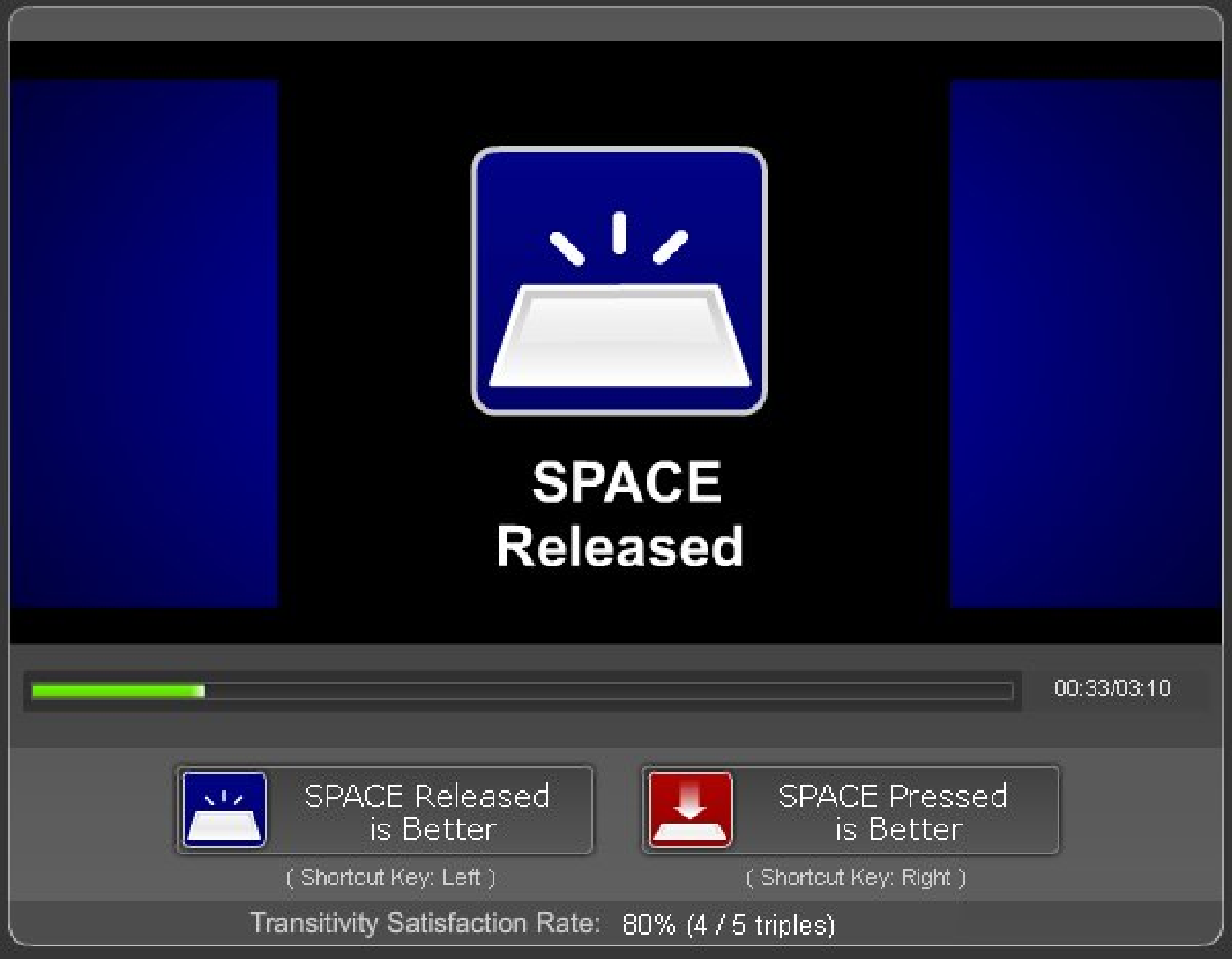 (a) Released state
(a) Released state
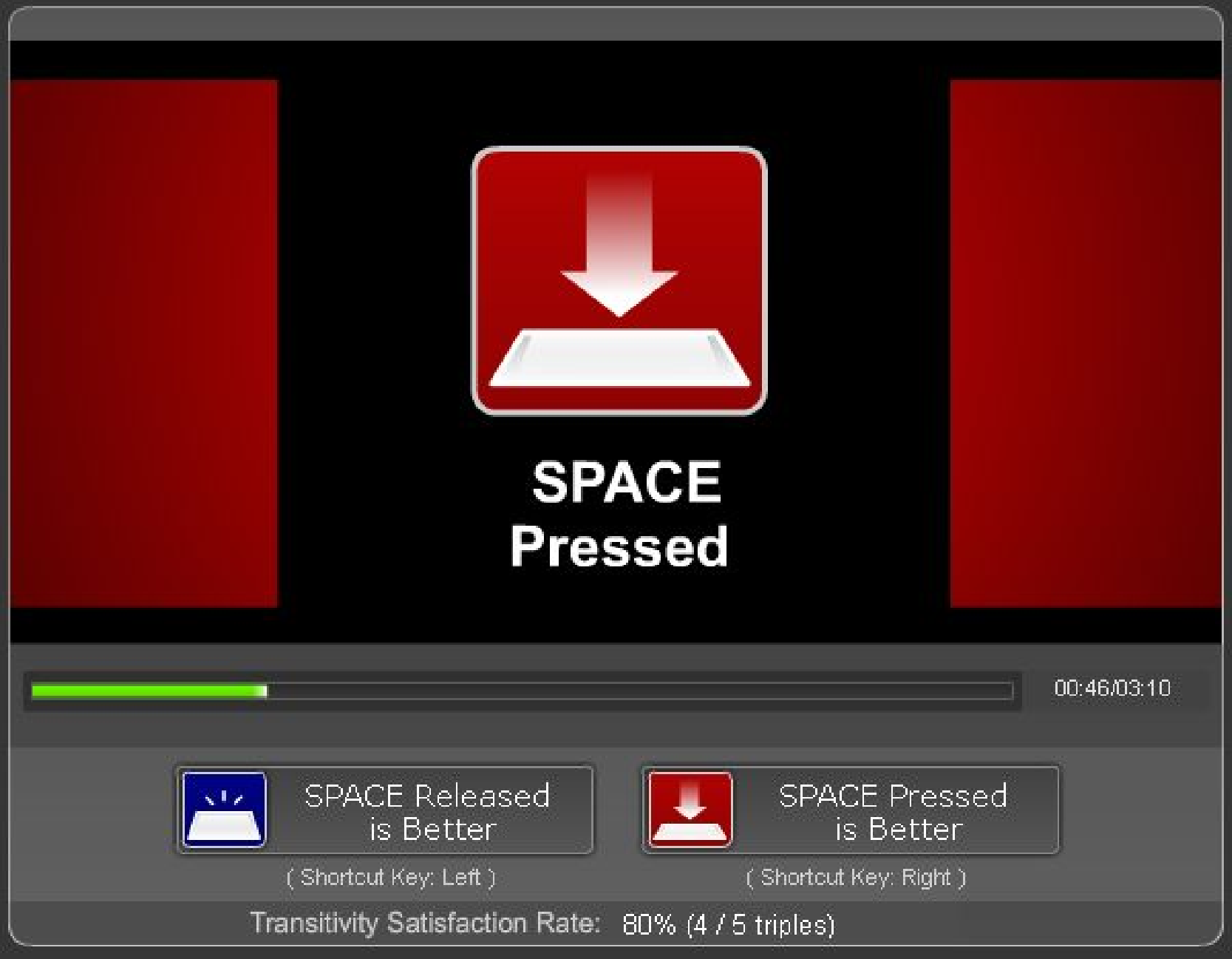 (b) Pressed
state
(b) Pressed
state
 (a) Released state
(a) Released state
 (b) Pressed
state
(b) Pressed
state
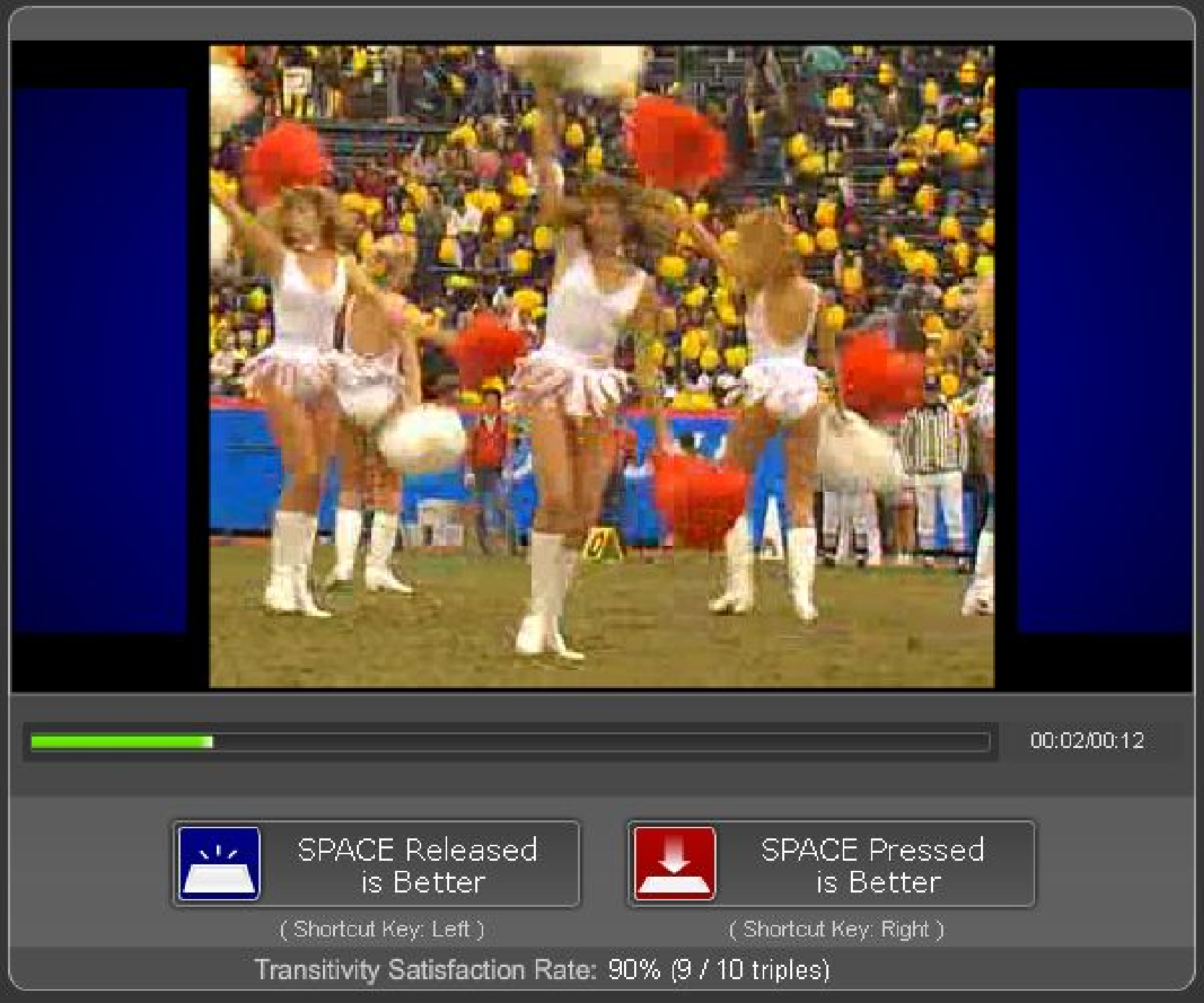 (a) Released state
(a) Released state
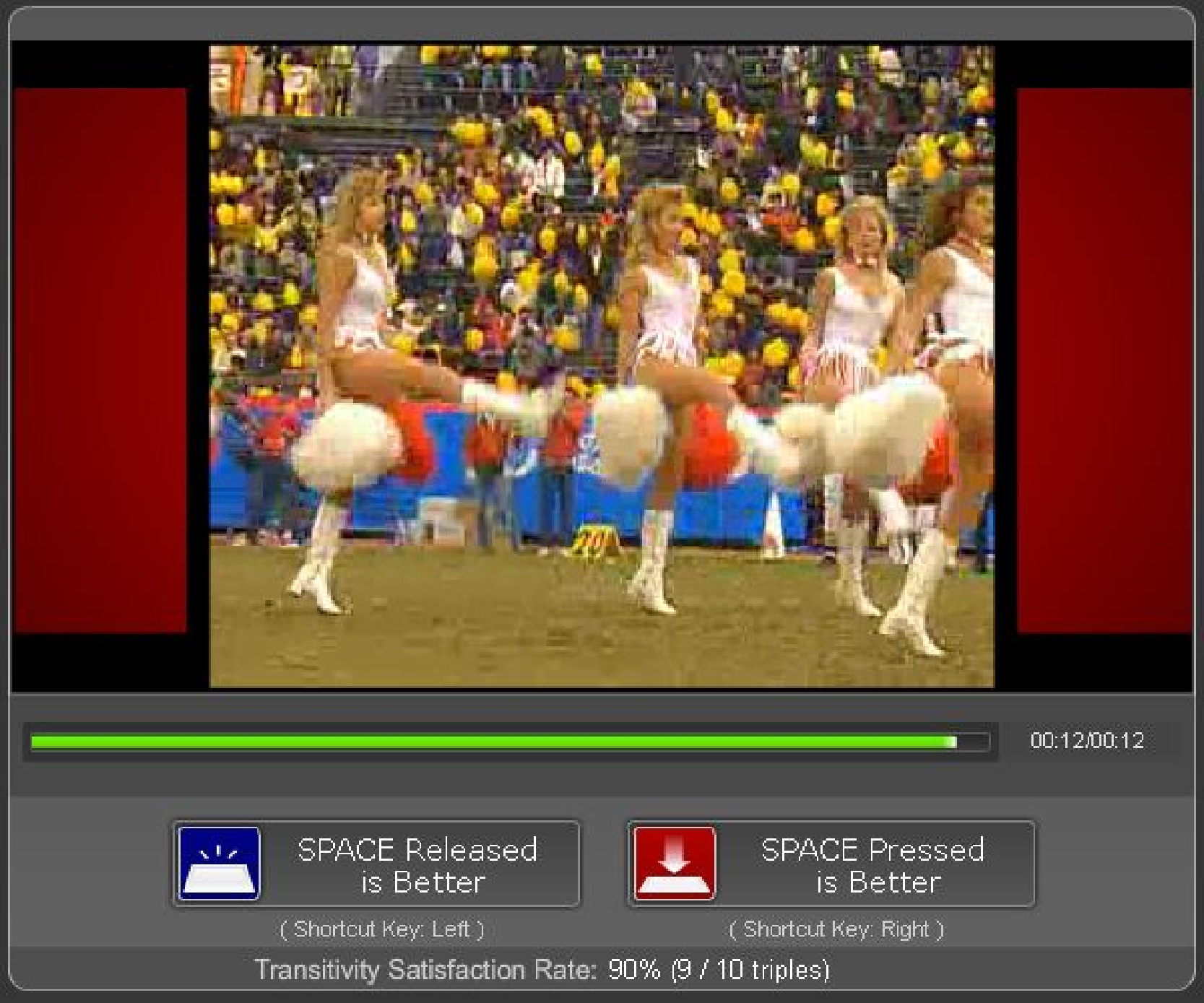 (b) Pressed
state
(b) Pressed
state
